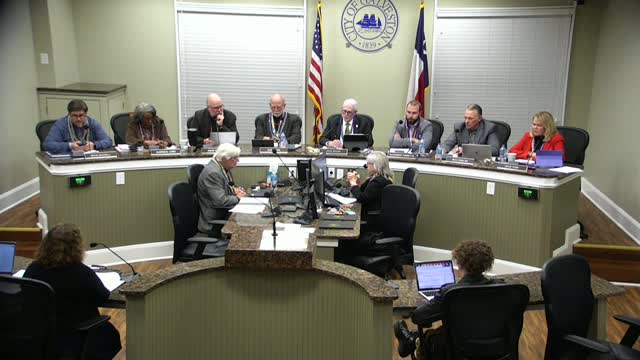Galveston residents demand action against rising coyote population threatening pets and safety
January 23, 2025 | Galveston , Galveston County, Texas
This article was created by AI summarizing key points discussed. AI makes mistakes, so for full details and context, please refer to the video of the full meeting. Please report any errors so we can fix them. Report an error »

In the heart of Galveston, city council members gathered on January 23, 2025, to address pressing issues that resonate deeply with residents. As discussions unfolded, the need for changes in zoning requirements emerged as a focal point, reflecting a broader push towards revitalizing the area between the University of Texas Medical Branch (UTMB) and downtown. Council members acknowledged the importance of moving forward with the comprehensive plan, emphasizing that even incremental progress is better than stagnation.
However, the meeting took a sharp turn as residents voiced their growing concerns about a more immediate and alarming issue: the rising coyote population in the city. During the public comment segment, several citizens passionately shared their distress over encounters with coyotes, which they claim have become a significant threat to pets and, potentially, to public safety. One resident recounted a harrowing experience that resulted in a staggering $26,100 veterinary bill after their dog was attacked. This sentiment was echoed by others who described the coyotes as a nuisance that has proliferated unchecked, with some suggesting that the city has been neglectful in addressing the problem.
The urgency of the situation was palpable as speakers called for action, urging city officials to develop a plan to manage the coyote population. They argued that the city should take responsibility for the safety of its residents and their pets, likening the current situation to allowing a pack of dangerous dogs to roam freely. The emotional testimonies painted a picture of a community grappling with fear and frustration, as residents recalled a time when coyotes were a rare sight in Galveston.
As the meeting progressed, the council members listened intently, acknowledging the concerns raised. The discussions highlighted a critical intersection of urban planning and wildlife management, underscoring the need for a balanced approach that considers both community development and public safety.
With the council's decision to move forward with zoning changes, the path ahead appears to be one of transformation. Yet, the pressing issue of coyotes looms large, leaving residents wondering what steps will be taken to ensure their safety and restore peace to their neighborhoods. As the meeting concluded, the call for action resonated, leaving a lingering question: how will Galveston address the dual challenges of urban growth and wildlife management in the days to come?
However, the meeting took a sharp turn as residents voiced their growing concerns about a more immediate and alarming issue: the rising coyote population in the city. During the public comment segment, several citizens passionately shared their distress over encounters with coyotes, which they claim have become a significant threat to pets and, potentially, to public safety. One resident recounted a harrowing experience that resulted in a staggering $26,100 veterinary bill after their dog was attacked. This sentiment was echoed by others who described the coyotes as a nuisance that has proliferated unchecked, with some suggesting that the city has been neglectful in addressing the problem.
The urgency of the situation was palpable as speakers called for action, urging city officials to develop a plan to manage the coyote population. They argued that the city should take responsibility for the safety of its residents and their pets, likening the current situation to allowing a pack of dangerous dogs to roam freely. The emotional testimonies painted a picture of a community grappling with fear and frustration, as residents recalled a time when coyotes were a rare sight in Galveston.
As the meeting progressed, the council members listened intently, acknowledging the concerns raised. The discussions highlighted a critical intersection of urban planning and wildlife management, underscoring the need for a balanced approach that considers both community development and public safety.
With the council's decision to move forward with zoning changes, the path ahead appears to be one of transformation. Yet, the pressing issue of coyotes looms large, leaving residents wondering what steps will be taken to ensure their safety and restore peace to their neighborhoods. As the meeting concluded, the call for action resonated, leaving a lingering question: how will Galveston address the dual challenges of urban growth and wildlife management in the days to come?
View full meeting
This article is based on a recent meeting—watch the full video and explore the complete transcript for deeper insights into the discussion.
View full meeting
